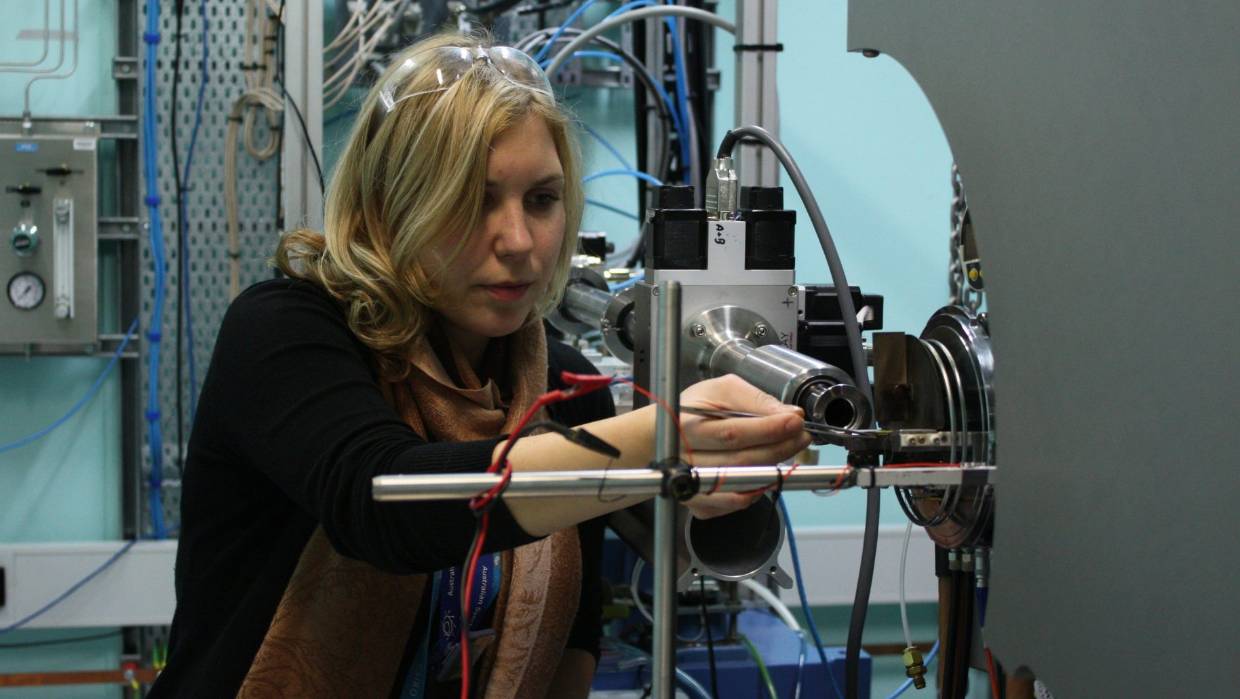How creative science can be
3 October, 2019
Dr Lauren Macreadie, MacDiarmid Institute researcher and Postdoctoral Research Fellow in the School of Fundamental Sciences at Massey University, talks about her work designing molecules to capture carbon dioxide.
Like many kids, I loved being at the beach. But those beaches of my childhood (the beaches of low-lying countries and communities around the world) are at risk of disappearing altogether. The science is in on climate change: we know the sea will rise due to the warming effects of the higher levels of carbon dioxide in our atmosphere - it's just a matter of how much and how fast. So perhaps it's no coincidence that I've headed into research to try and find a way to lower the carbon dioxide in the atmosphere.
As a chemist I'm working on designing molecules that absorb carbon dioxide. To do this, I work with MOFs (Metal Organic Frameworks). MOFs are amazing and tiny (right down to the nanoscale) materials with more holes than material itself. These 'holey' materials therefore have humungous surface areas; a teaspoon of MOF powder has the surface area of a rugby field.
It's MOFs that have brought me to New Zealand – and I'm working with colleagues here as well as in Australia, on designing MOFs that can capture carbon. We have some great MOF candidates – one in particular is a 3D cube-type molecule. It's pretty unusual to have a 3D MOF.

Dr Lauren Macreadie in action in the laboratory
My goal is to figure out how we could create these MOFs for industrial application at scale, so we could really pull back the atmospheric carbon levels. Scaling up is often the hard, but exciting, part – you can make a few grams of the substance in the lab, but taking that to industrial levels can be really challenging. If we can do it, this would bring us in New Zealand to the forefront of innovation and exciting applicable research employing MOF materials.
On the other side of the carbon ledger, looking to reduce emissions, it's clear that hydrogen has huge potential to be a key zero-carbon fuel – one that can be used to replace petrol and diesel. But in gas form it's inefficient to transport. It's much more efficient transported as a liquid fuel, but we're needing to finesse the chemistry in order to do this efficiently. So I'm also designing MOFs that can separate some of the chemicals that could be used to transport hydrogen in liquid form. In chemistry we use all kinds of mechanisms and tricks to separate chemicals, but in the case of these two chemicals, the problem is they're the same size, and have the same boiling points. So our traditional tricks of separation aren't going to cut it.
And yet it's important we figure out how to, because these are key for hydrogen transport. And with our large natural renewable energy sources, New Zealand has the chance to be a hydrogen exporter, sending hydrogen in a safe liquid form overseas where they pull off the hydrogen and send a different liquid back here for us to add the hydrogen back in again. This conversion is not always 100 per cent complete and we need a sieving material to separate the unconverted hydrocarbon from the bulk material at both ends. This will give us a pure liquid hydrocarbon and make the whole process much more efficient.
People don't realise how creative science is. When I'm thinking of designing a new chemical MOF, I'm thinking like an architect – how does it need to look, what does it need to do, where should the windows be, where are the walls, the strengthening? And then down the line it's incredibly satisfying to see the MOF actually doing what you've designed it for – it's actually separating out the CO2!
I might not be back at the Melbourne beaches of my childhood, but I'm never far away in my heart, wanting to make sure we do everything we can to reduce sea level rise, not just for us here in New Zealand but for our neighbours in the Pacific and around the world. That's what gets me out of bed every morning.
This article is part of an ongoing series called Climate Lessons, where scientists explain what their research has taught them about climate change. Read the full article on Stuff.


